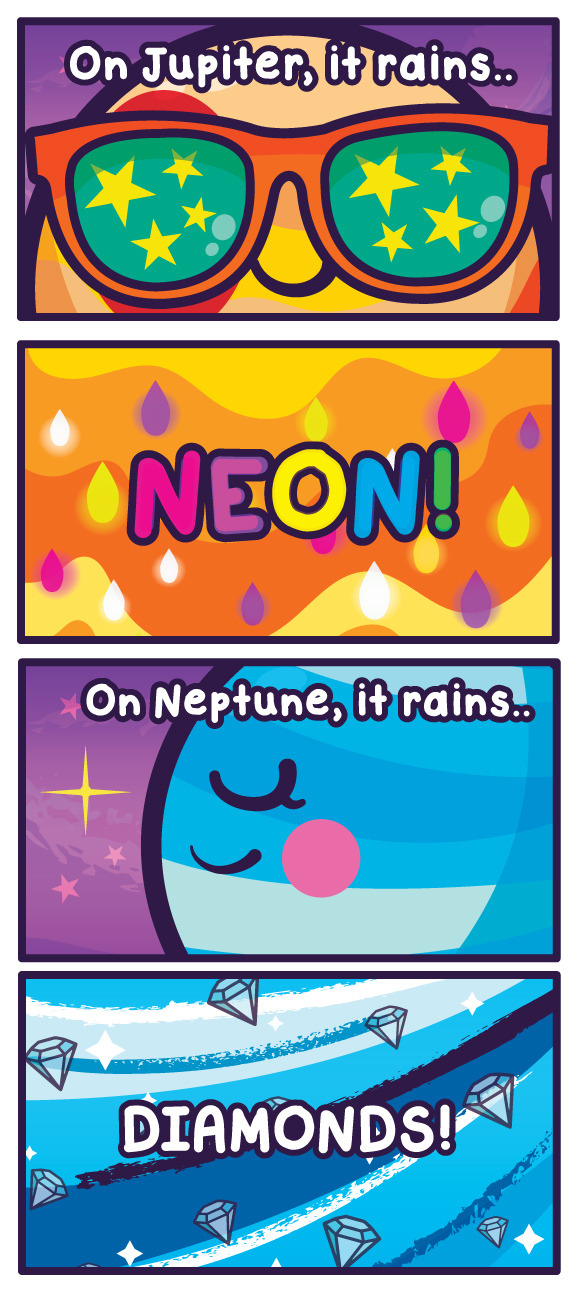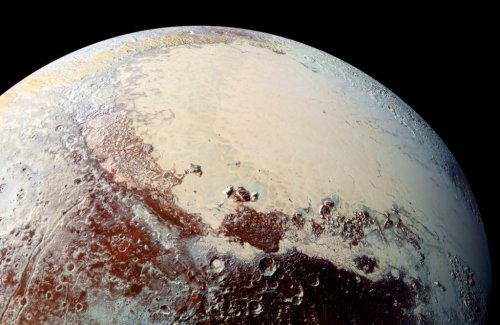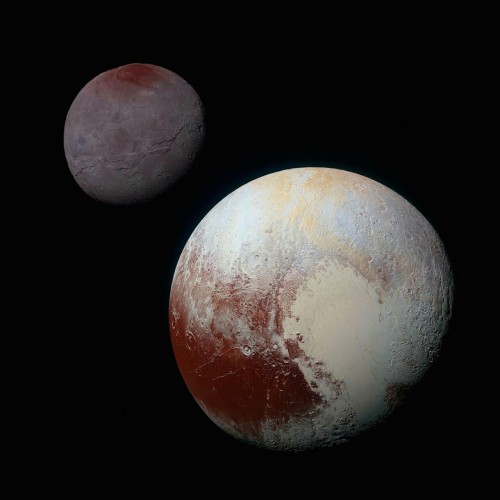Plutoisnotaplanet - Gnat In Space



More Posts from Plutoisnotaplanet and Others

Slime mold was grown on an agar gel plate shaped like America and food sources were placed where America’s large cities are.
The result? A possible look at how to best build public transportation.
I just really like the idea of slime mold on a map of the US. It’s beautiful.

It’s time for a musical World Record Wednesday! The “Golden Record,” created by NASA and placed on both Voyager spacecraft in 1977, is the phonographic recording to travel farthest. Currently hurtling through space at a distance of over 12 billion miles from Earth on Voyager I, the album is literally a “world record"—a collection of sounds, songs, and short speeches intended to represent the best of planet Earth and humanity. The tracks were carefully curated by NASA and a committee chaired by Carl Sagan, and include music from Bach, Beethoven, Stravinsky, Chuck Berry, Louis Armstrong, and others. (Fun fact: the producer of the Golden Record,“ Timothy Ferris, is an award-winning science author who wrote the script for the Museum’s Space Show “Dark Universe.”)
The Record also features musical recordings from Senegal, Russia, Japan, and other countries. Carl Sagan, who worked on the project, stated that "the spacecraft will be encountered and the record played only if there are advanced space-faring civilizations in interstellar space. But the launching of this ‘bottle’ into the cosmic 'ocean’ says something very hopeful about life on this planet.”
Listen to the album on the Museum’s first-ever Spotify playlist: https://goo.gl/mogYK6
Image: NASA
I Spent So Much Class Time Making This
Please follow it. Maybe I’ll get extra credit.
10 Times More Galaxies!
The universe suddenly looks a lot more crowded…
We already estimated that there were about 100 billion galaxies in the observable universe, but new research shows that this estimate is at least 10 times too low!

First, what is the observable universe? Well, it is the most distant part of the universe we can see from Earth because, in theory, the light from these objects have had time to reach Earth.

In a new study using surveys taken by the Hubble Space Telescope and other observatories, astronomers came to the surprising conclusion that there are at least 10 times more galaxies in the observable universe than previously thought. This places the universe’s estimated population at, minimally, 2 trillion galaxies!

The results have clear implications for galaxy formation, and also helps shed light on an ancient astronomical paradox – why is the sky dark at night?
Most of these newly discovered galaxies were relatively small and faint, with masses similar to those of the satellite galaxies surrounding the Milky Way.

Using deep-space images from the Hubble Space Telescope and other observatories, astronomers converted the images into 3-D, in order to make accurate measurements of the number of galaxies at different epochs in the universe’s history.
In addition, they used new mathematical models, which allowed them to infer the existence of galaxies that the current generation of telescopes cannot observe. This led to the surprising conclusion that in order for the numbers of galaxies we now see and their masses to add up, there must be a further 90% of galaxies in the observable universe that are too faint and too far away to be seen with present-day telescopes.

The myriad small faint galaxies from the early universe merged over time into the larger galaxies we can now observe.
That means that over 90% of the galaxies in the universe have yet to be studied! In the near future, the James Webb Space Telescope will be able to study these ultra-faint galaxies and give us more information about their existence.

So back to the question…Why is the sky dark at night if the universe contains an infinity of stars? Researchers came to the conclusion that indeed there actually is such an abundance of galaxies that, in principle, every patch in the sky contains part of a galaxy.
However, starlight from the galaxies is invisible to the human eye and most modern telescopes due to other known factors that reduce visible and ultraviolet light in the universe. Those factors are the reddening of light due to the expansion of space, the universe’s dynamic nature, and the absorption of light by intergalactic dust and gas. All combined, this keeps the night sky dark to our vision.
Make sure to follow us on Tumblr for your regular dose of space: http://nasa.tumblr.com

lol watch irma try to run up on me…

Don’t post your negativity on a positive post.
get rekt earth my moons are cooler

Pluto’s moons: Nix, Hydra, Styx and Kerberos are not gravitationally locked so you see more than one side, unlike our moon which always faces us. Charon is gravitationally locked to Pluto.
-
 chancellorcannoli reblogged this · 1 month ago
chancellorcannoli reblogged this · 1 month ago -
 daily-young-sheldon reblogged this · 1 month ago
daily-young-sheldon reblogged this · 1 month ago -
 top-scar-maverick liked this · 1 month ago
top-scar-maverick liked this · 1 month ago -
 therealdollyqueen liked this · 2 months ago
therealdollyqueen liked this · 2 months ago -
 sese-gamer liked this · 2 months ago
sese-gamer liked this · 2 months ago -
 donkeykongclassifiedsecrets liked this · 3 months ago
donkeykongclassifiedsecrets liked this · 3 months ago -
 ofthefrogs liked this · 5 months ago
ofthefrogs liked this · 5 months ago -
 annita89q8i6jph liked this · 6 months ago
annita89q8i6jph liked this · 6 months ago -
 annaoyq4c liked this · 6 months ago
annaoyq4c liked this · 6 months ago -
 starryrika liked this · 7 months ago
starryrika liked this · 7 months ago -
 serahblue liked this · 7 months ago
serahblue liked this · 7 months ago -
 atomsmute liked this · 8 months ago
atomsmute liked this · 8 months ago -
 starcavediner liked this · 9 months ago
starcavediner liked this · 9 months ago -
 satinns reblogged this · 9 months ago
satinns reblogged this · 9 months ago -
 keemiracle413 liked this · 11 months ago
keemiracle413 liked this · 11 months ago -
 enderlordisadumbusername liked this · 11 months ago
enderlordisadumbusername liked this · 11 months ago -
 mastarlightgarden588 liked this · 11 months ago
mastarlightgarden588 liked this · 11 months ago -
 todo-lo-que-quiero-para-mi reblogged this · 1 year ago
todo-lo-que-quiero-para-mi reblogged this · 1 year ago -
 todo-lo-que-quiero-para-mi liked this · 1 year ago
todo-lo-que-quiero-para-mi liked this · 1 year ago -
 leda-timeandspace liked this · 1 year ago
leda-timeandspace liked this · 1 year ago -
 y2ksnowglobe reblogged this · 1 year ago
y2ksnowglobe reblogged this · 1 year ago -
 spirituallytwerking liked this · 1 year ago
spirituallytwerking liked this · 1 year ago -
 na0art reblogged this · 1 year ago
na0art reblogged this · 1 year ago -
 na0art liked this · 1 year ago
na0art liked this · 1 year ago -
 street-of-mercy liked this · 1 year ago
street-of-mercy liked this · 1 year ago -
 missyjuju reblogged this · 1 year ago
missyjuju reblogged this · 1 year ago -
 izuminokamiis liked this · 1 year ago
izuminokamiis liked this · 1 year ago -
 rikraft reblogged this · 1 year ago
rikraft reblogged this · 1 year ago -
 4oursacrowd liked this · 1 year ago
4oursacrowd liked this · 1 year ago -
 pardon-my-obsessive-tendencies reblogged this · 1 year ago
pardon-my-obsessive-tendencies reblogged this · 1 year ago -
 luciferfan5g liked this · 1 year ago
luciferfan5g liked this · 1 year ago -
 tokupidgeon reblogged this · 1 year ago
tokupidgeon reblogged this · 1 year ago -
 opalallegra reblogged this · 1 year ago
opalallegra reblogged this · 1 year ago -
 justremainingmyself reblogged this · 1 year ago
justremainingmyself reblogged this · 1 year ago -
 justremainingmyself liked this · 1 year ago
justremainingmyself liked this · 1 year ago -
 sonatagreen liked this · 1 year ago
sonatagreen liked this · 1 year ago -
 themerpiiruler63 liked this · 1 year ago
themerpiiruler63 liked this · 1 year ago -
 piscesgirl2020 liked this · 1 year ago
piscesgirl2020 liked this · 1 year ago -
 puriteenism liked this · 1 year ago
puriteenism liked this · 1 year ago -
 itsmilamon liked this · 1 year ago
itsmilamon liked this · 1 year ago
welcome to my space space (see what i did there) (space means two different things)
232 posts




